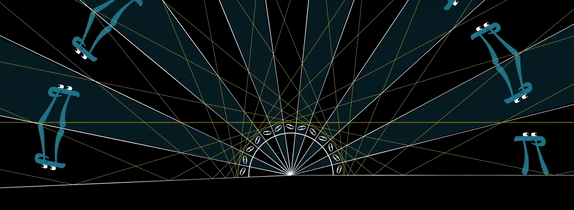One of my sons sent me the link to the videos below. They show a very unusual way to find the digits of π. The problems and its two solutions show the connections and the interplay between mathematics and physics. The quality of the illustrations and the verbal explanations are excellent.
Here are the main concepts used in solving the problem:
From physics:
- Conservation of energy,
- Conservation of momentum,
- Phase space,
- Phase diagram,
- Optics (angle of incidence equals angle of reflection),
- Dot product and column vectors.
From high school math:
- Geometry (the inscribed angle theorem),
- Simultaneous equations,
- Analytic geometry,
- Equation of a line and translations,
- Equation of a circle.
From calculus:
- power series for the Inverse Tangent function,
- related rates,
- error analysis (not the Lagrange or alternating series error bounds),
- slope in parametric form dy/dt, and dx/dt.
Here are the videos. (The second should open after the first, and the third after the second; or, you may click on one at a time.)
The most unexpected answer to a counting puzzle (5:12)
So why do colliding blocks compute pi? (15.15)
How colliding blocks act like a beam of light … to compute pi (14:40)
The videos are on the YouTube site 3blue1brown, by Grant Sanderson. The site describes itself as some combination of math and entertainment, depending on your disposition. The goal is for explanations to be driven by animations and for difficult problems to be made simple with changes in perspective.
The site contains a number of other videos that look like they are worth watching.

